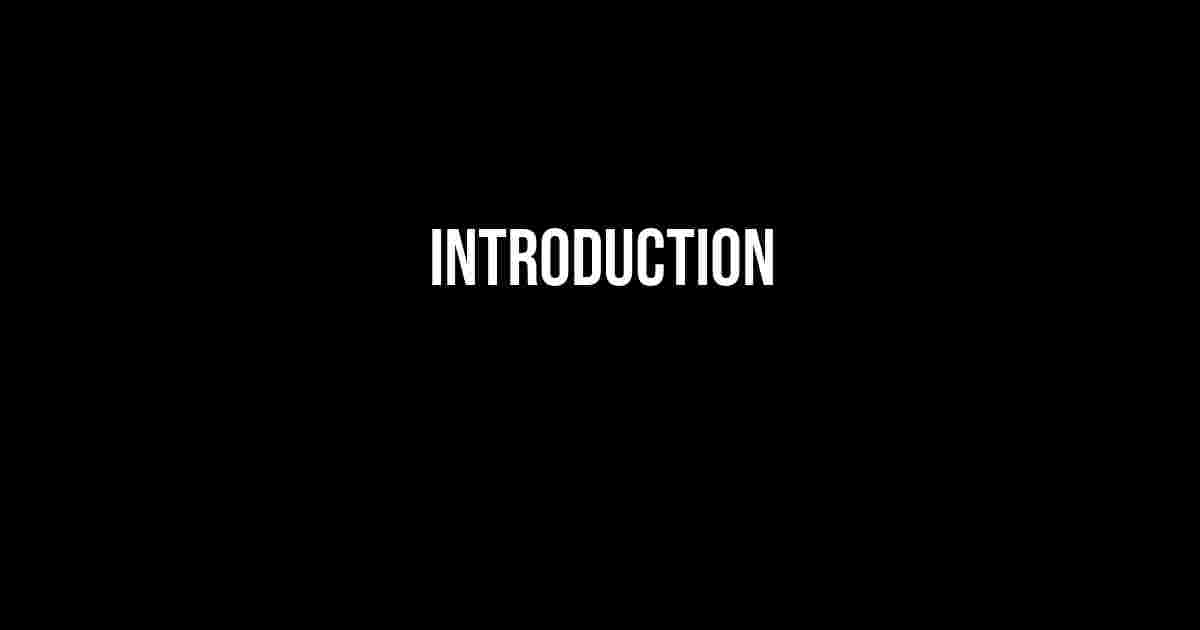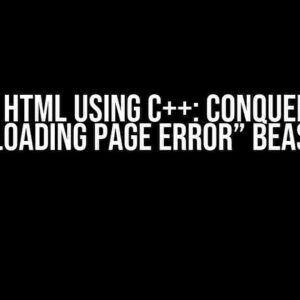**Angular Material Dialog Full Screen Toggle: A Comprehensive Guide**
Are you an Angular developer looking to create a stunning and user-friendly dialog experience using Angular Material? Do you want to give your users the flexibility to toggle between full-screen and normal modes? Look no further! In this article, we’ll explore the concept of Angular Material dialog full-screen toggle and provide a step-by-step guide on how to implement it.
- What is Angular Material Dialog?
- Prerequisites
- Step 1: Create a New Angular Material Dialog
- Step 2: Configure the Dialog Component
- Step 3: Add the Full-Screen Toggle Button
- Step 4: Implement the Full-Screen Toggle Logic
- Step 5: Add CSS Styles for Full-Screen Mode
- Step 6: Use the Dialog Component in Your Application
- Conclusion
- Best Practices
What is Angular Material Dialog?
Angular Material Dialog is a dialog component provided by the Angular Material library, which is a popular UI component framework for building Angular applications. The dialog component allows you to create modal windows, also known as dialogs, that can be used to display information, prompt user input, or perform tasks.
Why Do We Need Full-Screen Toggle?
Full-screen toggle is a feature that allows users to maximize the dialog window to occupy the entire screen, providing an immersive experience. This feature is particularly useful in scenarios where you need to display a lot of information or provide a detailed view of data. By toggling to full-screen mode, users can temporarily hide the surrounding UI elements and focus on the dialog content.
Prerequisites
Before we dive into the implementation, ensure you have the following:
* Angular 9 or later installed
* Angular Material installed and configured in your project
* Basic understanding of Angular and TypeScript
Step 1: Create a New Angular Material Dialog
To create a new Angular Material dialog, you’ll need to generate a new component using the Angular CLI.
ng generate component dialog-example
This will create a new component with the name `dialog-example`.
Step 2: Configure the Dialog Component
In the `dialog-example.component.html` file, add the following code to create a basic dialog template:
<mat-dialog>
<mat-dialog-content>
<p>This is a sample dialog content</p>
</mat-dialog-content>
<mat-dialog-actions>
<button mat-button>Close</button>
</mat-dialog-actions>
</mat-dialog>
Step 3: Add the Full-Screen Toggle Button
In the `dialog-example.component.html` file, add a new button to toggle the full-screen mode:
<mat-dialog>
<mat-dialog-content>
<p>This is a sample dialog content</p>
</mat-dialog-content>
<mat-dialog-actions>
<button mat-button>Close</button>
<button mat-button (click)="toggleFullScreen()">Toggle Full Screen</button>
</mat-dialog-actions>
</mat-dialog>
Step 4: Implement the Full-Screen Toggle Logic
In the `dialog-example.component.ts` file, add the following code to implement the full-screen toggle logic:
import { Component, Inject } from '@angular/core';
import { MatDialog, MatDialogRef, MAT_DIALOG_DATA } from '@angular/material/dialog';
@Component({
selector: 'app-dialog-example',
templateUrl: './dialog-example.component.html',
styleUrls: ['./dialog-example.component.css']
})
export class DialogExampleComponent {
isFullScreen = false;
constructor(
public dialogRef: MatDialogRef<DialogExampleComponent>,
@Inject(MAT_DIALOG_DATA) public data: any
) { }
toggleFullScreen(): void {
this.isFullScreen = !this.isFullScreen;
if (this.isFullScreen) {
this.dialogRef.updateSize('100%', '100%');
} else {
this.dialogRef.updateSize('400px', '200px');
}
}
closeDialog(): void {
this.dialogRef.close();
}
}
Step 5: Add CSS Styles for Full-Screen Mode
In the `dialog-example.component.css` file, add the following CSS styles to customize the full-screen mode:
::ng-deep .mat-dialog.full-screen {
width: 100%;
height: 100%;
margin: 0;
padding: 0;
overflow: hidden;
}
::ng-deep .mat-dialog.full-screen .mat-dialog-content {
width: 100%;
height: 100%;
overflow: auto;
}
Step 6: Use the Dialog Component in Your Application
Create a new component to launch the dialog, and add the following code:
import { Component } from '@angular/core';
import { MatDialog } from '@angular/material/dialog';
import { DialogExampleComponent } from './dialog-example/dialog-example.component';
@Component({
selector: 'app-root',
template: `
<button mat-raised-button (click)="openDialog()">Open Dialog</button>
`
})
export class AppComponent {
constructor(private dialog: MatDialog) { }
openDialog(): void {
this.dialog.open(DialogExampleComponent, {
data: {}
});
}
}
Conclusion
That’s it! You’ve successfully implemented an Angular Material dialog with a full-screen toggle feature. By following these steps, you can provide your users with a flexible and engaging dialog experience.
Troubleshooting Tips
If you encounter issues with the full-screen toggle, ensure that you’ve added the correct CSS styles and updated the dialog size correctly in the `toggleFullScreen()` method.
Best Practices
When using the full-screen toggle feature, consider the following best practices:
* Ensure that your dialog content is responsive and adaptable to different screen sizes.
* Provide a clear and intuitive way to toggle between full-screen and normal modes.
* Consider adding a warning message or confirmation dialog before closing the full-screen dialog to prevent accidental data loss.
| Feature | Description |
|---|---|
| Full-Screen Toggle | Enables users to toggle between full-screen and normal modes. |
| Angular Material Dialog | Provides a modal window for displaying information or prompting user input. |
| Responsive Design | Ensures that the dialog content adapts to different screen sizes and devices. |
By following this comprehensive guide, you’ll be able to create stunning and user-friendly Angular Material dialogs with a full-screen toggle feature. Remember to keep your designs responsive, intuitive, and engaging to provide the best possible experience for your users.Here are 5 Questions and Answers about “Angular Mat Dialog Full Screen Toggle” in HTML format:
Frequently Asked Question
Get the most out of your Angular Mat Dialog with these frequently asked questions about full screen toggle!
How to open Angular Mat Dialog in full screen mode by default?
You can open Angular Mat Dialog in full screen mode by default by adding `fullscreen: true` to the dialog configuration. For example: `this.dialog.open(MyDialog, { fullscreen: true });`. This will open the dialog in full screen mode immediately.
How to toggle full screen mode in Angular Mat Dialog?
You can toggle full screen mode in Angular Mat Dialog by adding a button with a click event that sets the `fullscreen` property of the dialog to `true` or `false`. For example: ``.
Can I customize the full screen behavior of Angular Mat Dialog?
Yes, you can customize the full screen behavior of Angular Mat Dialog by providing a custom implementation of the `MatDialogFullscreen` directive. This allows you to customize the full screen mode to fit your specific requirements.
How to close Angular Mat Dialog when in full screen mode?
You can close Angular Mat Dialog when in full screen mode by calling the `close()` method of the dialog reference. For example: `this.dialogRef.close();`. This will close the dialog and exit full screen mode.
Are there any known issues with Angular Mat Dialog full screen toggle?
Yes, there are some known issues with Angular Mat Dialog full screen toggle, such as issues with multiple monitors and certain browser versions. Be sure to check the official Angular Material documentation for the latest information on known issues and workarounds.
Let me know if you need anything else!




